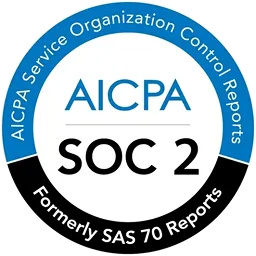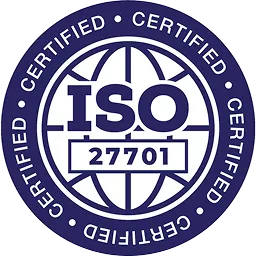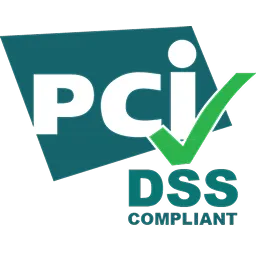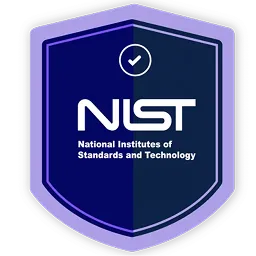As an IT manager, ensuring the right access to sensitive data and systems is critical. This article explores the concept of Role Mining—what it entails, the benefits it offers, and its key objectives—to help you streamline access management and enhance overall IT governance.
Managing user access across numerous applications and systems can quickly become overwhelming. Without a clear understanding of who needs access to what, you risk granting unnecessary permissions or overlooking critical security gaps. This lack of visibility and control increases the likelihood of unauthorized access and data breaches.
Enter Role Mining—a systematic approach to analyzing and defining user roles and permissions within your IT infrastructure. By leveraging automated tools and methodologies, Role Mining enables you to identify patterns and relationships in user access data.
Now, we will delve into the definition of role mining, its objective, benefits, and more. Let’s begin.
What is Role Mining?
Role mining, also known as role discovery or role engineering, is the process of analyzing user permissions and access patterns within an organization to identify common roles or job functions.
Imagine a sprawling corporate network with hundreds of employees, each requiring access to various applications and resources based on their roles and responsibilities. Without proper access management, this could result in a long queue of permissions, which in turn leads to inefficiencies and security vulnerabilities. Here, role mining steps in as a solution.
Through sophisticated algorithms and analysis, role mining sifts through the tangled web of user permissions, identifying commonalities and patterns. For instance, it might be discovered that employees in the finance department consistently access accounting software and financial databases.
With this insight, role mining constructs a specialized role, such as \"Financial Analyst,\" bundling together the necessary permissions for streamlined access. This enhances productivity by ensuring employees have the right tools at their fingertips and reduces the risk of unauthorized access by aligning permissions precisely with job functions.
The Objective of Role Mining
The main goal of role mining is to simplify how access is managed in a business. Think of users in a company working across different departments and projects. Each user requires various permissions to get their jobs done. Ideally, each specific task or project should have its own set of permissions neatly packaged into what we call a \"business role.\"
However, defining these business roles can be like solving a puzzle without all the pieces. Business processes are often unclear, making it hard to know exactly what permissions are needed for each activity. So, instead of starting from scratch, role mining looks at the permissions users already have in different applications and tries to group them into logical roles based on patterns.
Using algorithms and AI techniques, role mining sifts through all this permission data to find common threads and suggest new business roles that make sense. This helps organizations manage their access control, reducing the risk of security issues and making it easier to manage who has access to what. It's like turning chaos into order, one permission at a time.
Benefits of Role Mining
Here are several benefits of role mining:
- Improved Security: Role mining helps organizations enhance security by identifying and eliminating unnecessary or excessive access rights. By defining clear roles and permissions based on employees' actual job responsibilities, organizations can reduce the risk of unauthorized access and data breaches.
- Efficient Access Management: Role mining streamlines access management processes by identifying common access patterns and grouping users into roles with similar permissions. This simplifies the assignment of access rights and reduces the administrative burden of managing individual user permissions.
- Compliance with Regulations: Many regulatory frameworks, such as GDPR, HIPAA, and SOX, require organizations to implement proper access controls and segregation of duties. Role mining helps organizations achieve compliance by ensuring that access rights are aligned with regulatory requirements and industry best practices.
- Reduced Risk of Errors: Manual assignment of access rights can be prone to errors and inconsistencies. Role mining automates the process of identifying common access patterns and suggesting role assignments, reducing the likelihood of mistakes and ensuring that access rights are applied consistently across the organization.
- Increased Productivity: By simplifying access management and ensuring that employees have the appropriate level of access to perform their job functions, role mining can help improve productivity. Employees spend less time requesting access and waiting for approvals, allowing them to focus on their core responsibilities.
- Cost Savings: Role mining can help organizations optimize their access management processes and reduce the overhead associated with managing user permissions. By eliminating unnecessary access rights and streamlining access provisioning, organizations can lower operational costs and improve resource utilization.
- Enhanced Visibility: Role mining provides organizations with greater visibility into their access landscape by identifying outliers and identifying areas where access controls may be too permissive or restrictive. This visibility enables organizations to make informed decisions about access policies and security measures.
- Support for Auditing and Reporting: Role mining generates detailed reports and audit trails that document access rights and role assignments within the organization. These reports help organizations demonstrate compliance with regulatory requirements, support internal audits, and facilitate accountability and transparency.
- Scalability: As organizations grow and evolve, role mining helps ensure that access management processes remain scalable and adaptable to changing requirements. New roles can be easily identified and integrated into existing access structures, allowing organizations to maintain effective access controls across their expanding user base.
- Continuous Improvement: Role mining is an iterative process that allows organizations to continuously refine and optimize their access management practices. By periodically reviewing and updating role assignments based on changing business needs and access patterns, organizations can ensure that their access controls remain effective and aligned with organizational objectives.Overall, role mining offers numerous benefits to organizations seeking to improve security, compliance, efficiency, and productivity in their access management processes. By leveraging role mining techniques, organizations can establish robust access controls that align with business requirements and support their overall security and compliance objectives.
How is Role Mining Done?
Role mining is crucial in ensuring streamlined access management within an organization. Let's explore the complete process involved in role mining.
Step 1: Defining Objectives
Before diving into role mining, it's crucial to clearly define your objectives. You need to understand what specific goals you want to achieve through role mining. Whether improving security, streamlining access management, or enhancing compliance, having a clear vision will guide the entire process.
Step 2: Data Collection
The next step involves gathering relevant data from various sources within your organization. This data may include user accounts, permissions, job roles, departmental information, and access logs. Compiling this data gives you a comprehensive view of your organization's current access landscape, which is essential for effective role mining.
Step 3: Analyzing Data
Once you have collected the necessary data, it's time to analyze it thoroughly. This analysis identifies patterns, relationships, and dependencies among users, roles, and permissions. Advanced algorithms and data mining techniques can help uncover hidden insights and correlations that manual analysis might overlook.
Step 4: Role Discovery
Based on the analysis of the collected data, role discovery begins. During this phase, potential roles are identified based on similarities in access patterns and job responsibilities. This process may involve clustering users with similar access rights or conducting role-based access control (RBAC) analysis to define logical groupings of permissions.
Step 5: Role Refinement
Role refinement is a critical step where identified roles are reviewed, validated, and refined based on feedback from stakeholders and real-world observations. This iterative process ensures that roles accurately reflect the organization's structure, business processes, and security requirements.
Step 6: Role Assignment
After roles have been defined and refined, the next step is to assign users to appropriate roles. Role assignment should be based on user job functions, responsibilities, and the principle of least privilege, ensuring that users have access only to the resources necessary to perform their duties.
Step 7: Role Maintenance
Role mining is not a one-time task but an ongoing process. Role maintenance involves regularly reviewing and updating roles to accommodate changes in organizational structure, job roles, and access requirements. Automated tools can help streamline this process by continuously monitoring access patterns and suggesting role adjustments as needed.
Step 8: Monitoring and Auditing
Finally, monitoring and auditing are crucial in ensuring the effectiveness of role mining efforts. By continuously monitoring user access and conducting regular audits, you can detect unauthorized access, identify role conflicts, and maintain compliance with regulatory requirements.
Future Trend of Role Mining
Role mining, traditionally employed to streamline access controls within organizations, is undergoing a transformative evolution. Moving beyond its conventional role of mapping user roles and permissions, the future of role mining lies in its ability to dynamically adapt to the ever-changing needs of modern enterprises.
One prominent trend shaping the future of role mining is the integration of artificial intelligence (AI) and machine learning (ML) algorithms. These technologies revolutionize role-based access control, offering your organization a solid foundation for automating access management. By harnessing AI with rich data, you gain a comprehensive view of identity management, simplifying role mining and enhancing other access management tasks like access requests.
Further, these technologies simplify upholding the principle of least privilege, granting necessary access while swiftly blocking unnecessary access to prevent security threats. AI automates the detection of over-permissioned and non-essential access, using advanced analytics to predict, recommend, and enforce changes to access privileges. Adapting access based on evolving business roles enhances system security and boosts employee productivity.
Further, these technologies simplify upholding the principle of least privilege, granting necessary access while swiftly blocking unnecessary access to prevent security threats. AI automates the detection of over-permissioned and non-essential access, using advanced analytics to predict, recommend, and enforce changes to access privileges. Adapting access based on evolving business roles enhances system security and boosts employee productivity.
Leverage Role Mining to Simplify Your Access Mangement
In conclusion, role mining stands out as a pivotal process for optimizing access management within organizations. By meticulously examining user permissions and responsibilities, role mining reveals the intricate web of access privileges, paving the way for more efficient and effective access governance.
However, navigating the complexities of access management can be challenging, which is why solutions like Zluri's access management offer invaluable assistance. It leverages the power of role mining to simplify role-based access control (RBAC) strategies seamlessly. With Zluri, organizations can effortlessly identify redundant permissions, mitigate security risks, and enhance operational efficiency.
Zluri's platform empowers your organization to streamline user permissions, creating a secure and compliant environment for their enterprise. By embracing role mining practices and harnessing Zluri's expertise, organizations can strengthen their security posture and optimize resource allocation.
In essence, role mining emerges as a critical capability for organizations seeking to fortify their security posture and maximize the effectiveness of their access governance strategies. By embracing role mining and partnering with Zluri, organizations can embark on a journey toward enhanced access governance, fortified security, and sustained success in the digital landscape.







.png)

.svg)














